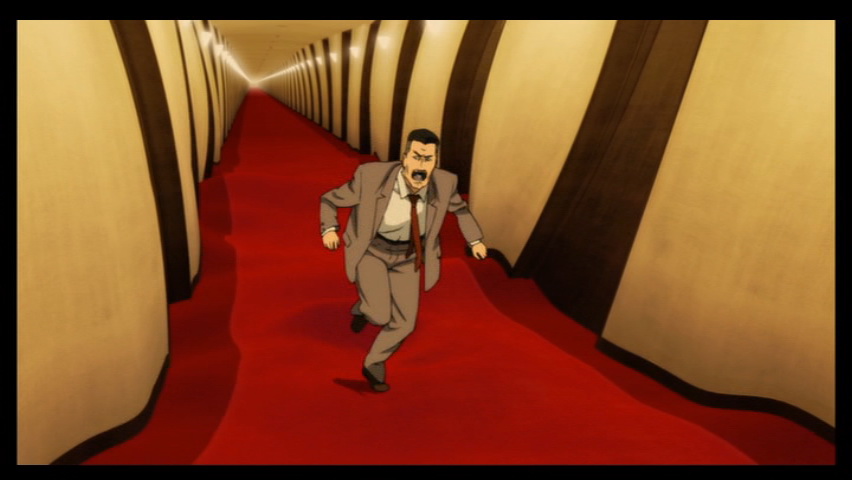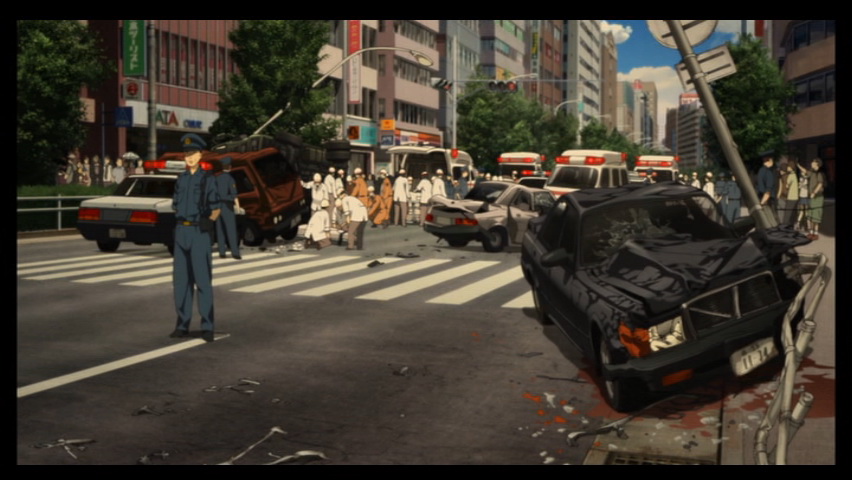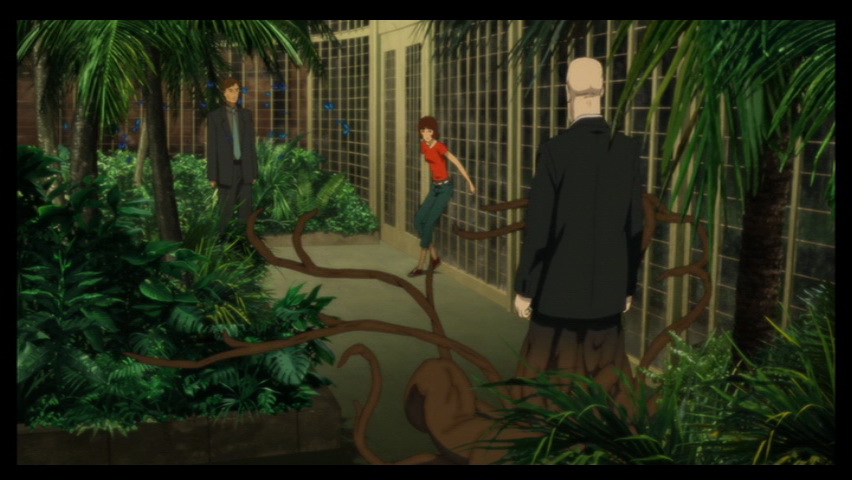Part 2
Paprika (2006)
Satoshi Kon's film Paprika (2006) can be differentiate from the other four films studied here in that it is animated rather than live action. While animation offers a particular set of traditions and opportunities in the representation of architecture, the rules governing the architecture in this film are substantially the same as the live actions films analyzed in this paper. Paprika (2006) explores two worlds - the 'real' world and the dream world - and the devastation caused when the dream world invades the real world. In much the same way as our dreams are constructed of real world experiences put together in strange and often illogical ways, the architecture of Paprika (2006)'s dream world is a mash-up of recognizable structures, such a hotel corridor, and physical impossibilities, such a wave rippling through the structure. The architecture of the real world of this film is divided into two extremes - the controlled architecture of the scientific research facility, a public institution, and the chaotic architecture of the private homes and workplaces of the two 'geniuses' Tokita Kohsaku and Himuro Kei.
The dream world appears to collide with the real world a number of times during the film - the stability of the real world gives way to the chaos of the dream world when Dr. Atsuko Chiba leaps over the fence at the amusement park the first time, for example. When the layers have finally been peeled away and the real world is revealed, the destruction of dreamers locked inside their own private worlds walking around in society is dramatic - they have completely lost the social nature necessary for retaining balance and maintaining order.
Within the dream world the Chairman, the agent of chaos, is represented as half-man, half-tree implying that the wilderness must be kept at bay for civilized society to exist. The construction of a building traditionally begins with a clearing of wilderness from the site while a sign of decay is the re-growth of the natural world in and around a building. The Chairman, unlike, for example, the Joker from The Dark Knight (2008), is not interested in chaos for the sake of chaos but rather in the rebalancing of the potentially destructive intrusion into the most private of private worlds - the mind. He seeks to protect dreams, to keep them private and thus to maintain a place for man to be unsocial and in some sense also maintaining a place for the natural world within the built environment. While the creator of the DC-MINI was interested in simply making it possible to enter and manipulate dreams, he failed to consider the effect this intrusion could have on the greater social order. The Chairman abused the new technology to make a point - in much the same way as Bruce Wayne/Batman did in the Dark Knight (2008) - the point that a private world is as essential as a social/ordered/scientific world.
 |
 |
 |
Instability of Imaginary Structures |
The Dream World as a Destructive Force |
The Threat of Nature |